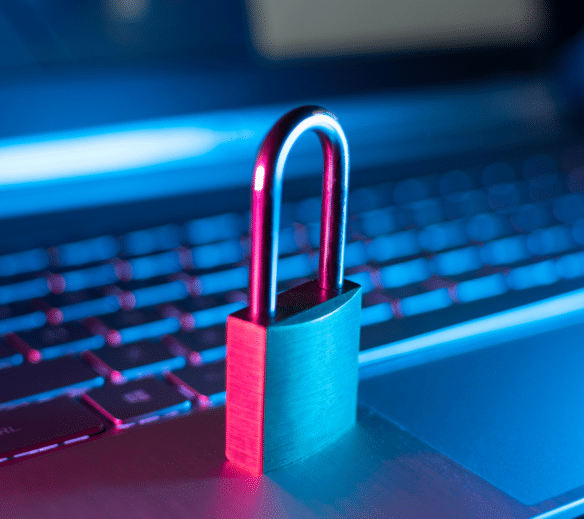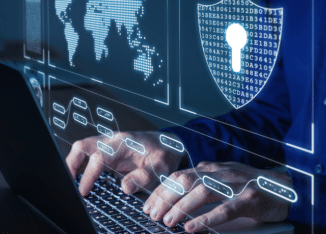Olivia Pickering
Marketing Executive
December 10, 2024
Explore our FAQs to answer some of the most common questions organisations have about phishing and advice on how to protect your employees from malicious attacks.
Phishing attacks are a major threat to businesses today. To protect your organisation, start by educating employees to recognise phishing attempts, implement multi-factor authentication (MFA) for sensitive accounts, and utilise advanced email filtering tools. Additionally, regularly updating software, conducting periodic security training for your employees, and establishing clear reporting procedures will help mitigate the risk of a phishing attack compromising your organisation’s data.
1. What are phishing emails?
Phishing emails are fraudulent communications designed to appear as if they’re from a legitimate source, such as a legitimate company or internal colleague. These emails often include malicious links, attachments, or prompts to steal sensitive information like login credentials, financial data, or proprietary business information. Recognising phishing attempts and types of phishing attacks is the first line of defence against this growing threat.
2. What steps can employees take to protect against phishing attacks?
Employees play a key role in protecting your organisation from phishing. Encourage them to:
- Verify the sender’s email address and look out for red flags like unusual language or requests for sensitive information.
- Avoid clicking on links or downloading attachments from unknown or unexpected sources.
- Report suspicious emails promptly to your IT or security team.
- Stay aware of the latest phishing tactics through ongoing training and simulated phishing exercises.
By fostering a culture of cybersecurity awareness, your employees can significantly reduce the likelihood of falling victim to phishing attacks.

3. How do I report a suspicious email or file?
When employees encounter a suspicious email, it should be immediately reported to the appropriate point of contact within your organisation, usually the IT or security team. Forward the email without clicking any links or opening any attachments. In many cases, email providers such as Outlook or Gmail have built-in features for reporting phishing attempts directly from the inbox, which can help prevent future threats.
4. Can I check if a link is safe before clicking?
Yes, it’s possible to check the safety of a link before clicking it. Hovering over a hyperlink will display the full URL, allowing you to verify its authenticity. If the link looks suspicious like a fake website which doesn’t align with what’s expected, it’s best to avoid clicking it. There are also browser safety features and third-party tools like Google’s Safe Browsing that can help check whether a link is safe.
5. What types of phishing scams should businesses be aware of?
Phishing scams come in many forms, and businesses must be vigilant about the following:
- Email Phishing: Generic phishing attacks targeting multiple individuals in an organisation.
- Spear Phishing: Highly targeted attacks aimed at specific individuals, often with personalised information.
- Whaling: Phishing attacks targeting high-level executives or key decision-makers within an organisation.
- Smishing: Phishing message attempts through SMS or text.
- Vishing: Phishing conducted over the phone, where attackers impersonate legitimate sources to extract information.
Understanding the different types of phishing scams will help businesses better prepare their employees and systems to identify and defend against these threats.

6. Why is Multi-Factor Authentication important in preventing phishing?
Multi-Factor Authentication (MFA) is an essential security measure for businesses looking to protect sensitive information. MFA requires users to provide two or more forms of verification (e.g., password and a unique code sent to a mobile device) before granting access to business-critical systems. Even if login credentials are compromised in a phishing attack, MFA adds an additional layer of security, making it much harder for attackers to gain unauthorised access.
7. How often should businesses conduct phishing awareness training?
Phishing awareness training should be an ongoing effort within your business. It’s recommended to conduct formal training at least twice a year, with periodic refreshers and updates on emerging phishing tactics. Running simulated phishing tests and providing employees with quick-reference guides can help reinforce security best practices and keep phishing top of mind.
8. Can phishing emails be blocked automatically?
Yes, advanced email filtering solutions can automatically detect and block phishing emails before they reach your employees’ inboxes. These tools can scan incoming messages for suspicious content, known malicious links, and flagged domains. While no system is 100% fool proof, using such tools dramatically reduces the likelihood of phishing emails successfully reaching employees.

9. How Does phishing differ from other cyber-attacks?
Phishing is unique in that it relies on social engineering to manipulate individuals into divulging sensitive information or performing actions that compromise security. Unlike ransomware or malware attacks, which involve direct exploitation of system vulnerabilities, phishing typically begins with a deceptive email or message designed to gain the trust of the recipient. Once the attacker has the information they need, they can exploit vulnerabilities or launch further attacks within the organisation.
Why protecting your business from phishing is essential
Phishing attacks not only put your organisation’s sensitive data at risk but can also result in significant financial loss, reputational damage, and legal consequences. Implementing comprehensive phishing protection measures, including employee training, MFA, and advanced email filtering, can significantly reduce the likelihood of a successful attack and protect your organisation’s assets.



